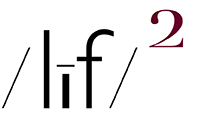outside ~ (embiggenable) • µ4/3rd
ephemera ~ (emvigeenable) • iPhone
inside ~ (embiggenable) • iPhone
IF MY INFORMATION IS CORRECT, YESTERDAY WAS CAMERA DAY. That is not a date which is marked on my calender. Although, truth be told, I do not have any dates marked on my calender simply because I do not have a calender.
In any event, as it happens, I have actually been thinking about a camera. An Olympus Pen F to be exact. That's cuz, now that Olympus (my long-time camera brand of choice) is getting out of the camera business, I am thinking now is the time to purchase a new body which, hopefully, will last me until I pass over to the the big darkroom in the sky.
However, it is still early in the game, re: the new entity that will acquire the Olympus photo gear operation, to know what kind of ongoing support will be available for what remains of the photo product line. Panasonic is an option but it remains to be seen what their commitment to the µ4/3rd format will be without Olympus in the game. That written, with the advanced-amateur camera market in free-fall, who knows where any camera maker is headed.
All of that written, you might wonder why, with my nearly exclusive use of my iPhone for my picture making, I am even considering a new camera. The answer is quite simple: 1.) I can not ever imagine giving up making pictures with a real camera. There are some picture making requirements that the iPhone does not meet to my satisfaction, and, 2.) there is at least one picture making project I wish to undertake that the iPhone can not give me the look I am seeking, i.e. narrow depth of field with a wide angle lens-see the above outside picture which was made with a 24mm (equivalent) lens on one of my µ4/3rd camera.
All things considered, re: a new camera body, I think a waiting game is in order to determine how things will shake out. In the meantime, my current µ4/3rd gear is giving me exactly what I want, so, it's on with the show.

